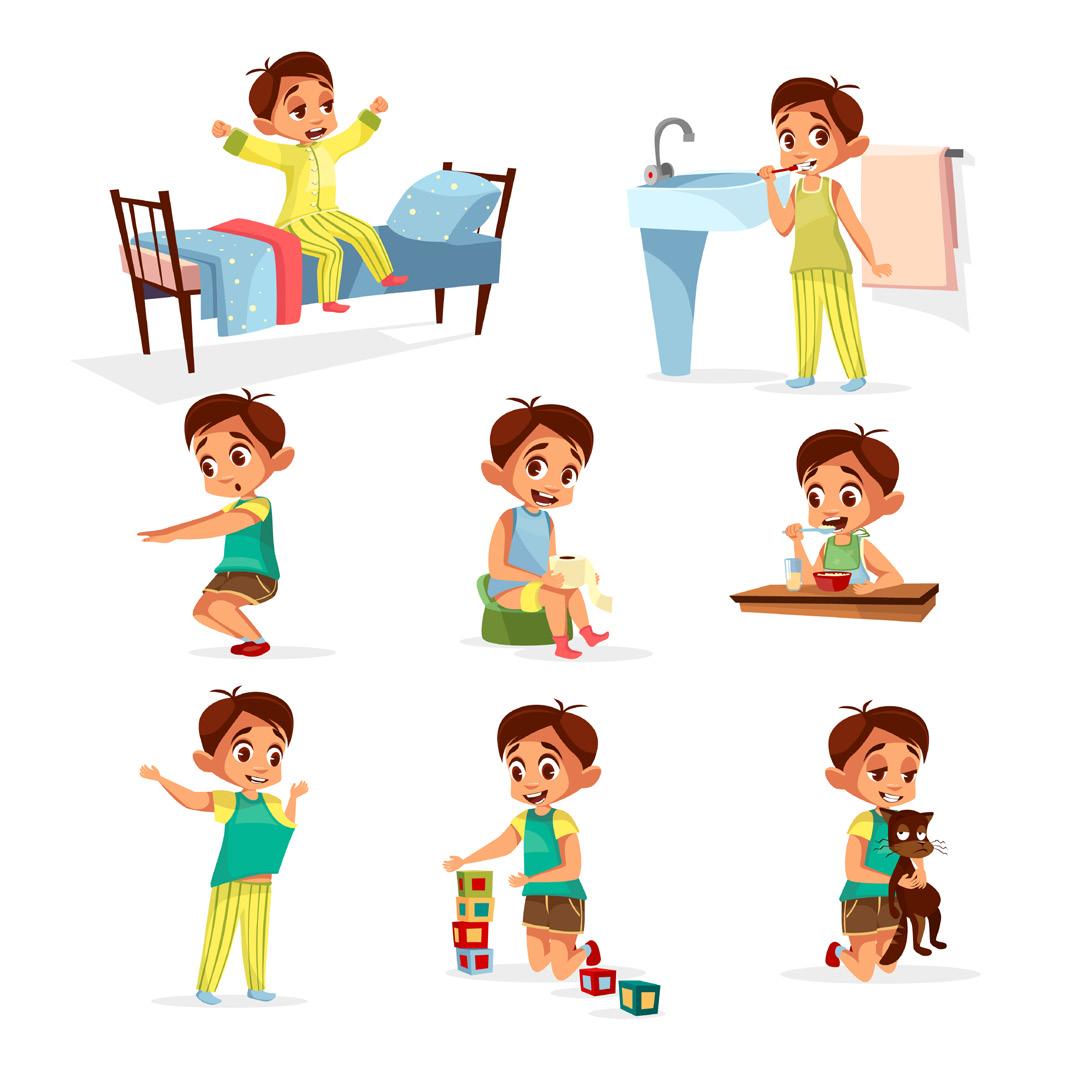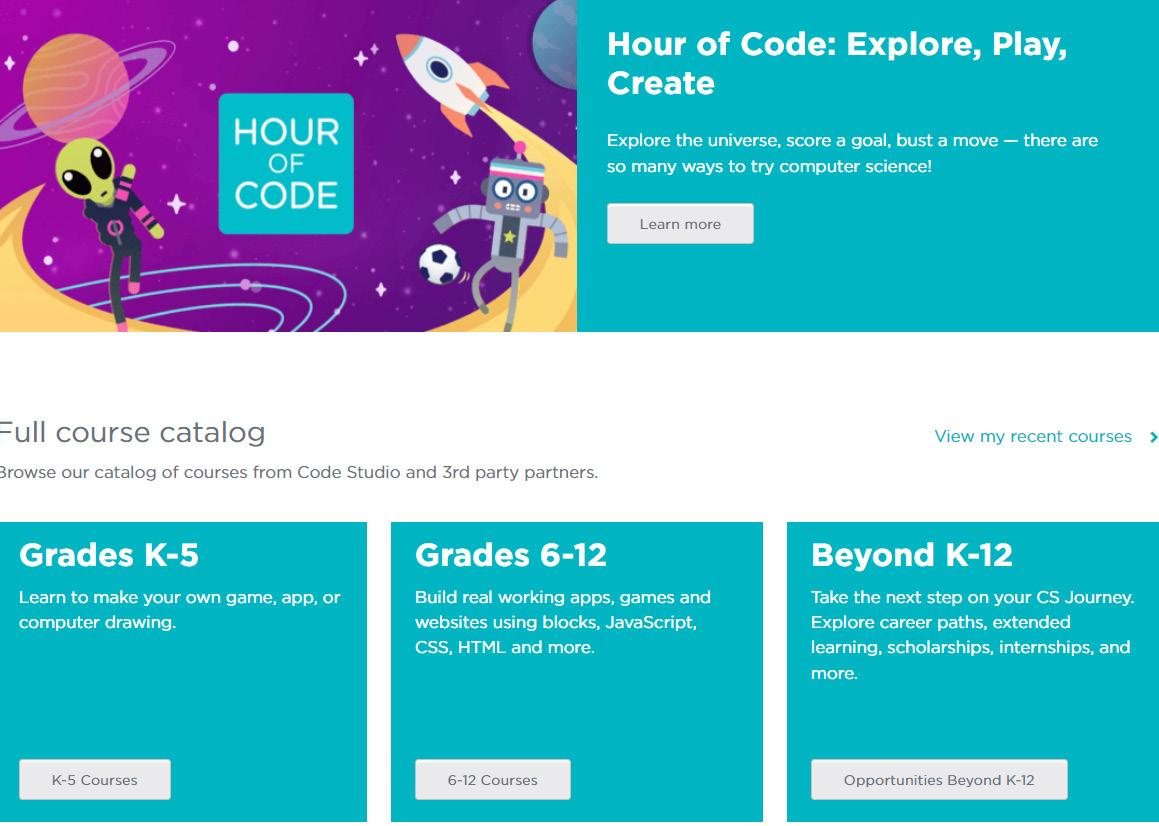Chapter 1
Introduction to Coding
Can you read the talk bubbles in the picture below?
Yes. Then you know English.
Can you read the talk bubbles in this picture too?
No. This is because we do not know all these languages.
We must know the same language to communicate with each other.
As you know, a computer is a machine. And a machine cannot understand our language.
So how can we make a computer do a task for us?
We must learn a language that computers can understand too. That’s what coding is.
Coding is the language used to talk to a computer.

With coding, we can make a computer do a task for us. Additionally, learning coding helps us: 1. Think and ask questions. 2. Visualise problems. 3. Think of solutions. 4. Solve problems in many ways. 5. Break down a bigger problem into smaller ones to solve it easily.
6. Learn how to decide what to do in different situations. 7. Learn how to decide what to do and when.
What
Coding Language Should We Learn?
We must start with block-based coding to learn how to code.

But, Why?
Using block-based coding, we can:
1. Easily remember the colour-coded code blocks.
2. Code with a simple drag-and-drop method.

3. Code without worrying about syntax.
4. Be future-ready.
5. Learn to code while having fun.
6. Express ourselves by making digital cards or apps.
Block-Based Coding
Block-based coding is visual programming.

In this, we use colourful blocks. These colourful blocks are the instructions.
We use them to make the computer do a task.
In 2003, MIT introduced the first block coding language.
In block-based coding, you join blocks just like Lego.

Exploring Code.org
It’s time to start the coding journey.
We will be learning block-based coding on a platform called Code.org. Code.org is an educational platform where we learn to code.
Let’s explore the platform.
Follow the steps given below to sign in to the platform.
1 Go to Code.org
Open chrome.
Type in the link below in the address bar. https://code.org/
2 Sign into Code.org
Click on Sign in button.
Sign in using an existing Gmail account or by creating a new one.
Note: You can also use your parents’ email ID.
Ask your teacher or parent to help you sign in.
Instructions
2 Observe the missing part
1 Read the instruction Observe the missing part of the elephant in the Workspace. 6 Code.org Coding

Place the missing part
Left click the missing part.


Hold the button and drag the picture block to complete the picture.
Once the puzzle is complete, a sound will be played.
You will also see a message as shown below.

Make a picture of the house with the given picture blocks.

1 Read the instruction
Instructions
Arrange the blocks to form the image
2 Observe the house
Left click the missing part. Hold the button and drag the picture block to complete the picture.


Complete the picture
Left click the missing part.
Hold the button and drag the picture block to complete the picture.

Once the puzzle is complete, a sound will be played.
You will also see a message as shown below.

Puzzle-Solving Challenge
Make a picture of a computer with the given picture blocks.

To open the activity
Open chrome.
Type in the link given below in the address bar.
https://bit.ly/comp-p
Ask your teacher or parent to help you.
Chapter 2

Command and Sequence
Command is giving instructions to someone to do something.
See the picture below. What instruction is the woman giving to her dog?



Right! The woman is instructing the dog to sit.
Similarly, we can give commands to a computer to do a task.
In block-based programming, the blocks are the commands.

We use the code blocks to give commands to a computer.

Commands to turn a computer character in different directions: Block To turn a character in a direction North or Up South or Down East or Right West or Left



When we give more than one command in an order, it is called a Sequence.

Number the pictures below in the correct sequence. Practice
Let’s try once again!
Number the pictures in the circle before them to put them in the correct sequence.
There is a sequence in every process happening around us.
Have you observed any sequence in your daily life?
Let’s look at the journey of a seed becoming a fruit.
1. Take a pot and fill it with soil.
2. Put in the seed and cover it with soil.
3. With proper sunlight and water, it will sprout.
4. After some time it will flower.
5. Then, the fruit comes.
This sequence cannot be changed.
The seed will not grow into a plant if the sequence is not followed.



) the set of pictures which are in the correct ) the sets of pictures that are not in
2. Number the pictures to put them in the correct sequence.















Tour to Puzzle Code Studio
Let us first understand the Puzzle Code Studio.
The Puzzle Code Studio includes four main parts, as shown below in the picture.

Play Area : Where the program will run.
Toolbox : Holds the blocks needed to solve the puzzle.
Workspace : Where you will drag the blocks from Toolbox to code.
Instructions : Step-by-step instructions to solve the puzzle.
We need a sequence of steps to do a task. But the sequence can be fixed or flexible.
Fixed sequence : There is only one way to do the task.
Flexible sequence : There can be more than one way to do the task.
Example
Observe the picture below.
Is there more than one way to make the angry bird reach the bad pig?


What type of sequence is this?
Solution
Fixed Sequence
Only one way to do the task.
Example
Observe the picture below.
Is there more than one way to make the angry bird reach the bad pig?

What type of sequence is this?


Solution
Flexible Sequence
More than one way to do the task.





4. It will ask you for details like, “Are you a student or a teacher”?
Fill in your details there.
NOTE: Always enter an age of 18 or older; otherwise, you will be unable to access all of the activities.
5. After you sign up, you will see your dashboard. On top, click on “Course Catalog.”




8. Select the first activity, “Learn to Drag and Drop”, and start doing the activities.

